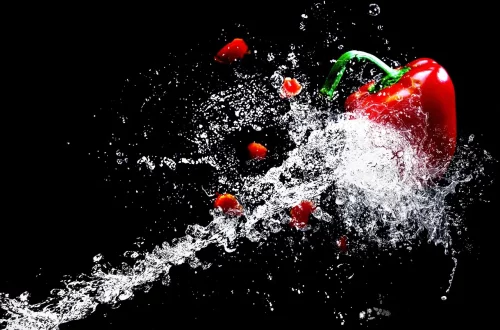
Understanding the Challenges of Hamstrung Horses and Their Recovery
Understanding the Challenges of Hamstrung Horses and Their Recovery
When it comes to equine athletes, the hamstring muscles play a crucial role in their performance and overall mobility. These powerful muscles are vital for activities such as running, jumping, and making quick turns. However, they are also susceptible to injuries that can significantly hinder a horse’s ability to perform. Hamstring injuries, often referred to as “hamstrung” conditions, can be complex and challenging both for the horse and the owner.
Understanding the underlying causes of these injuries is essential. Factors include overexertion, improper training techniques, and even environmental elements like uneven terrain. Each of these components can contribute to the strain placed on the horse’s muscles, leading to potential tears or strains. Moreover, the pain and discomfort resulting from a hamstring injury can have lasting effects not only on the horse’s physical health but also on its mental well-being.
Recovery from hamstring injuries is a multi-faceted process that requires careful planning, professional guidance, and a deep understanding of the horse’s condition. The journey to recovery can be long and involves not only physical rehabilitation but also mental and emotional support to ensure the horse returns to its previous level of performance. In this article, we will explore the challenges associated with hamstrung horses and the steps necessary for their recovery.
Understanding Hamstring Injuries in Horses
Hamstring injuries in horses are often categorized into strains, tears, and sprains, each varying in severity. A strain refers to the overstretching of the muscle fibers, while a tear indicates a more severe form of injury where the muscle may be partially or completely torn. Sprains involve the ligaments surrounding the muscle. These injuries are particularly common in horses that engage in high-impact activities, as the sudden demands placed on their bodies can lead to significant strain on the hamstring muscles.
Identifying the symptoms of a hamstring injury is crucial for timely intervention. Common signs include limping, reluctance to bear weight on the affected leg, swelling, and a noticeable decrease in performance levels. In some cases, the horse may exhibit signs of pain during exercise or even when at rest. Understanding these symptoms enables owners to seek veterinary advice promptly, which can significantly impact the recovery process.
The diagnosis of hamstring injuries typically involves a thorough physical examination and may include imaging techniques such as ultrasound or MRI. These diagnostic tools provide insight into the extent of the injury, allowing for a tailored treatment plan. The complexity of hamstring injuries often necessitates a multi-disciplinary approach, involving veterinarians, equine physiotherapists, and trainers to ensure a holistic recovery strategy.
Preventative measures are also essential in mitigating the risk of hamstring injuries. Regular conditioning and strengthening exercises, along with proper warm-up and cool-down routines, can help prepare the muscles for the demands of athletic performance. Additionally, ensuring that the horse has a balanced diet rich in nutrients can support muscle health and reduce the likelihood of injuries.
The Rehabilitation Process for Hamstrung Horses
Rehabilitation following a hamstring injury is a critical phase that requires patience and dedication. The first step in the recovery process typically involves rest and limited activity to allow the injured muscle to heal. Depending on the severity of the injury, this period can range from a few weeks to several months. During this time, it is crucial to monitor the horse closely and consult with a veterinarian to assess healing progress.
Once the initial healing phase is complete, rehabilitation can begin in earnest. This often includes a combination of physical therapy, controlled exercise, and gradual reintroduction to regular training routines. Equine physiotherapists play a vital role in this phase, employing techniques such as massage, ultrasound therapy, and targeted stretching to promote healing and strengthen the affected muscles.
A progressive exercise program is essential during rehabilitation. This might start with low-impact activities such as walking or gentle trotting and gradually increase in intensity as the horse regains strength and mobility. The goal is to rebuild muscle strength without placing undue stress on the healing tissues.
In addition to physical rehabilitation, mental support during this period is equally important. Horses are sensitive creatures, and their emotional well-being can be affected by the injury and the subsequent recovery process. Maintaining a positive environment, providing social interaction, and ensuring consistent handling can help alleviate stress and support a successful recovery.
Regular follow-ups with veterinarians and physiotherapists are necessary to track the horse’s progress and make adjustments to the rehabilitation plan as needed. This collaborative approach ensures that the horse receives comprehensive care tailored to its specific needs, ultimately leading to a smoother recovery journey.
Long-Term Management and Prevention Strategies
Once a horse has recovered from a hamstring injury, long-term management becomes vital to prevent future occurrences. Implementing a consistent conditioning program is essential for maintaining muscle strength and flexibility. This should include a variety of exercises that target not only the hamstrings but also the other muscle groups involved in equine performance.
Regular check-ups with a veterinarian can help monitor the horse’s overall health and detect any potential issues before they escalate. Implementing a routine that includes physical therapy sessions, strength training, and flexibility exercises can further reduce the risk of re-injury. Additionally, it is crucial for owners to remain vigilant regarding their horse’s behavior and performance levels, as these can provide early warning signs of potential problems.
Another key component of long-term management is nutrition. A balanced diet rich in essential vitamins and minerals supports muscle health and recovery. Consulting with an equine nutritionist can help in formulating a diet plan that meets the specific needs of the horse, taking into account its age, weight, and activity level.
Environmental factors should also be considered in preventing hamstring injuries. Ensuring that the horse has access to safe, level ground for training and exercise can significantly reduce the risk of falls or strains caused by uneven surfaces. Additionally, proper footing in arenas and during competitions can help minimize the chances of injury.
In conclusion, the journey of recovery for hamstrung horses is multifaceted and requires a comprehensive approach focusing on physical rehabilitation, emotional support, and preventive strategies. By understanding the challenges these injuries pose and implementing effective management techniques, horse owners can help their equine companions return to peak performance and enjoy a healthy, active life.
**Disclaimer**: This article is not intended as medical advice. Always consult a veterinarian for any health concerns regarding your horse.




